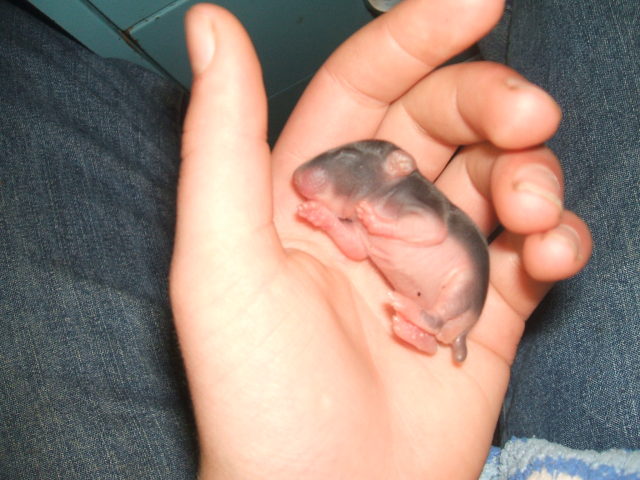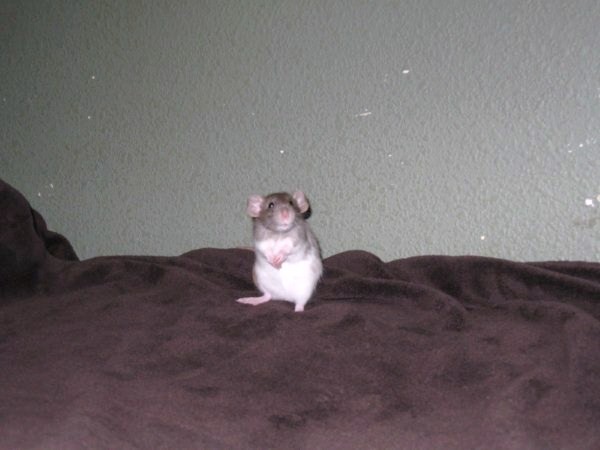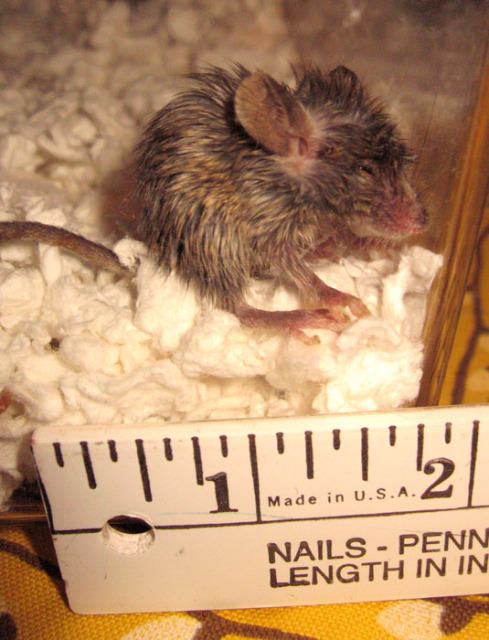QuestionQUESTION: I had my chinchilla out of his cage while it was being cleaned. He dashed unexpectedly underfoot and got stepped on.
Five hours at the emergency vet later, it seems like he's going to be okay, but he's got fractures by his right eye and on the bridge of his nose.
His jaw, mercifully, seems okay, but it's hard to be sure on the x-ray. At a minimum, he can open his mouth, but he doesn't want anyone to mess with it, so it must be sore.
Vet said to feed him soft foods for a month while he healed.
Problem: Chins aren't designed for soft foods, and I don't know what I can possibly feed him that would be soft, interesting to the chin, and healthy enough for a month of recovery.
The vet could not be more specific because she doesn't treat exotics... and knows of no one who does in our area.
Can you help?
ANSWER: Specialist emergency feeds that you mix with water and contain additional fibre, nutrients and probiotics are available, such as Supreme Science Recovery and Oxbow Critical care. These are excellent, but quite expensive and not always easy to get hold of in a hurry. The simplest form of feed is to soak pellets in warm water (preferably pre-boiled and cooled from a kettle to kill any bacteria) until they go soft. But if you have a coffee grinder (or buy one, they aren't very expensive) you can do a better job. Grind the pellets up into a fine powder and place in a bowl. Then grind up some alfalfa and/or hay - you may need to chop it with scissors before putting it into the grinder. If you sive it after grinding you get finer pieces. Adding about a third of this to the mixture gives the fibre that is necessary to keep the chinchillas insides healthy. Oxbow Western Timothy Hay and Alfalfa Nibbles are good for this. One of the advantages of making this sort of feed up is that you are feeding the chinchilla exactly what they would get in their normal diet. I mix this up to a sloppy paste with tepid/warm water (again preferably pre-boiled - make sure it isn't too hot).
It's probably worth considering adding a pro-biotic to the mix, especially if your chinchilla is getting antibiotics which can kill the good gut bacteria as well as infections. Your vet should have probiotics for small herbivores or you can buy a product such as Vetark Avipro or they are becoming more common in large pet shops. Because chinchilla pellets are already supplemented with vitamins and minerals there is no benefit of adding more and high levels of some can be toxic.
---------- FOLLOW-UP ----------
QUESTION: THANK YOU SO MUCH.
One question... should I just PRESENT this paste to him in his bowl and hope he eats some of it, or should I try to make him eat some of it?
Ever since the accident, the only thing I've gotten him to eat is one raisin I soaked in water overnight. Everything else I've offered him he behaves as if I'm trying to poison him.
I just don't know if I should force the issue of food, or let him choose on his own when he's hungry/ready.
Thanks.
Best
Christine
AnswerThis all depends on him. If he is is eating then allow him to eat at free will. However, if he is not eating and is just refusing food for more than a day then it will be necessary for you to feed him in order for him to stay alive and heal.
With that in mind you can use a baby type medicine syringe that comes in Tylenol for infants or a small spoon. Give him at least a 2 tsp twice a day. They usually eat 2 tbsp daily if dry, but when your sick you may not be able to eat as much, so I recommend to give half of that. If this does not work then you need to seek a vet that is trained with Chinchilla's for more help and maybe a food he/she may sell in their office.
I hope that this helps and if you need more help continue to write. Thanks and Happy New Year.

 Rattie question
QuestionHey there:) I recently got two five week old ma
Rattie question
QuestionHey there:) I recently got two five week old ma
 newborn rodent
QuestionQUESTION: Hello,
My daughter found a 2 3/4 inch
newborn rodent
QuestionQUESTION: Hello,
My daughter found a 2 3/4 inch
 Pet Rats (Temperary itchy skin)
Question
Casey
Hi Dawn,
Pet Rats (Temperary itchy skin)
Question
Casey
Hi Dawn,
 Question about taking care of a young mouse found in a live trap
Questioncandaules
QUESTION: Hallo! The liv
Question about taking care of a young mouse found in a live trap
Questioncandaules
QUESTION: Hallo! The liv
 Matted Fur Around Eye
Question
Tinkerbell the Chinchi
Hello,
&nb
Matted Fur Around Eye
Question
Tinkerbell the Chinchi
Hello,
&nb